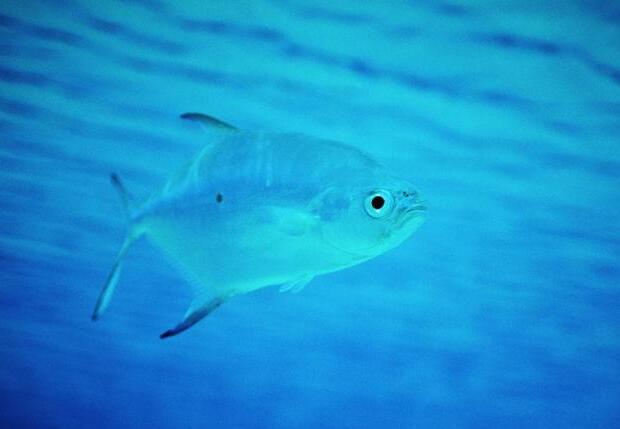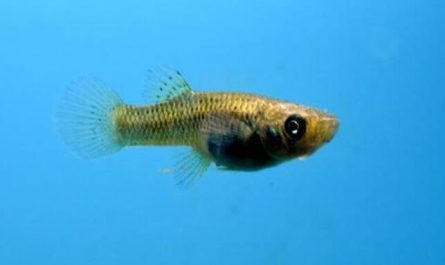The reason why fish in the deep sea glow
In the dark layer, at least 44% of the fish have the ability to emit light by themselves, so that they can see other objects in the long night, facilitate predation, and find companions and mates. Some fishes emit light, such as hairtails and dragon head fish in the southeast coast of my country, which are emitted by luminous bacteria attached to their bodies, while more fish emit light from the light-emitting organs of the fish themselves. The candlelight fish has multiple rows of illuminators on its abdomen and ventral sides, just like rows of candles, hence the name candlelight fish. The back of the head of the deep-sea bald fish is flat and covered by a pair of large light emitters, which may play a visual role. Fish luminescence is a biochemical reaction caused by the catalysis of a special enzyme. Luminous luciferin is catalyzed by luciferase. Luciferin absorbs energy and becomes oxidized luciferin, releasing photons to emit light. This is a special case of chemiluminescence, that is, it only emits light without heating. Some fish can emit white light and blue light, others can emit red, yellow, green and ghost fire-like dim light, and some fish can emit light of several different colors at the same time. For example, a deep-sea fish has a large luminous cheek organ that emits blue and reddish light, while other tiny luminous spots all over the body emit yellow light. The biological significance of fish luminescence has four points: one is to trap food, the other is to attract the opposite sex, the third is to connect the population, and the fourth is to confuse the enemy.
When talking about “brilliant light”, “flicker and twinkle”, children will immediately think of the clear night sky and blinking stars. In fact, this phenomenon also occurs on the seabed. If you have the opportunity to “deep sea expedition”, you will surely see the seabed and always emit brilliant light. So, what is going on? It turns out that there are many glowing fishes in the depths of the ocean. These brilliant lights are from them.
These light-emitting fish have light-emitting devices in their bodies. Most fish have light emitters on the sides of the body, buried in the skin. There are also light emitters that grow on the head of the fish or elsewhere. Some fish emit light that is relatively stable and can shine for a long time; some fish have a very short luminous rhyme; others flash like stars in the sky, sometimes bright and sometimes dark, and they are very beautiful.
Because of the light-emitting ability, the fish can see clearly the surrounding East 132 Newly compiled 100,000 in dark places, and can prey or defend against the enemy. The illuminator is like a lamp, which plays the role of lighting, so that the fish can play freely in dark places.
Types of deep-sea fish
There are more than ten species of deep-sea fish, such as tiger grouper, green grouper, pink grouper, afterburner, macaroni, and redfish.
The most commonly seen in restaurants is grouper, which includes sesame spot, sea tabby, oil spot, green spot, eastern star spot, Antarctic orange bream, Antarctic red shrimp, etc., which are eight kilometers under the North Pacific scallop sea. Species, these fish belong to the grouper group, but the appearance is very different. Dongxingban is the big beauty in the grouper, with fiery red fish scales and small blue star dots. The output is not large, so it is very expensive, mostly at three to five hundred yuan a catty. The tiger spots are dressed in white tiger skin markings, and the flesh is white and tender, and it tastes very delicious. There are also some grouper fish that are very ugly, such as the boss fish that is often said in the northern seafood restaurant. The whole body is uneven, which is really unsightly. But this kind of fish is not moving. It crawls under the water all day long, and its eyes never turn around. In addition, the most common fish is the partial mouth fish, which is also divided into left mouth fish and turbot. This kind of fish is flat and not good-looking, but it is like a big butterfly when swimming in the water.
The posture is beautiful. The most precious fish in the seafood pond is Su Mei. Su Mei is divided into large Su Mei and small Su Mei. The weight of large Su Mei can reach eight or nine catties; the production of small Su Mei is extremely low, and the price can be as high as 600-800 yuan per catty. . In seafood restaurants, you can also see small fish species from the sea, such as silverfin, sand-pointed fish, yellow crucian carp, small yellow croaker, and silver pomfret. These fish are produced in large quantities, and most of them are chilled products, and the price is very cheap. But their meat is white and delicate, and it tastes very delicious, but it is said that they can be fished in moderation, so we can eat really fresh large yellow croaker again.
The appearance characteristics of deep-sea fish
It belongs to more than ten families, and is characterized by large mouth, large eyes, and a light-emitting device on one or several parts of the body. The illuminator is used both to trap prey and to lure mates. Deep-sea fish have formed these special habits in order to adapt to the extremely stressful, extremely cold and dark living environment during their evolution. The habitat of deep-sea fish is the most special in the world. Because competition in the deep sea is not as fierce as the shore or shallow sea, many primitive taxa have survived to this day. The most important deep-sea fish groups are deep-sea angling, viperfish and hairy mouth fish. Deep-sea anglers belong to the suborder Ceratioidei (Ceratioidei). They trap prey by shaking the spines of their spinal fins as bait. Vipers belong to the Viperidae family (Chauliodontidae). They have many pinch teeth and are awesome predatory fish. ;Muzzlefish belongs to the Gonostomatidae family and is the most abundant fish in the world.






